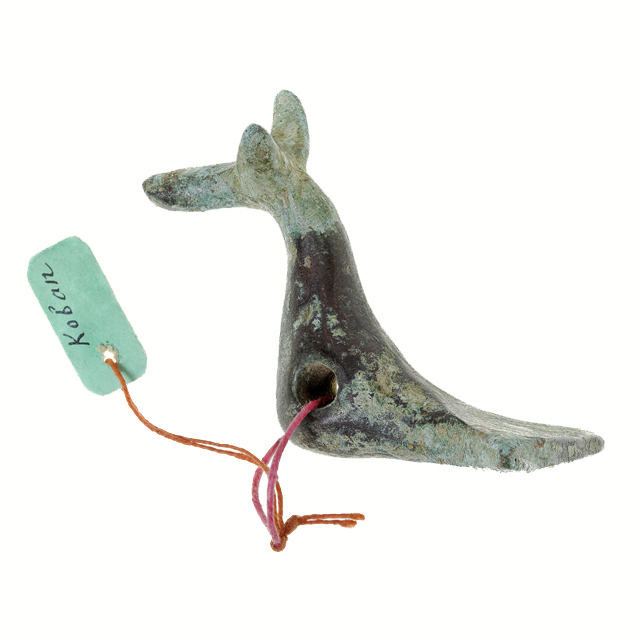Bronze Bird, North Ossetia

Transferred from the Wellcome Institute in 1985; 1985.52.220
In 1879 and 1881 the French archaeologist and anthropologist Ernest Chantre (1843–1924) conducted archaeological excavations at a Koban cemetery in North Ossetia, in the Caucasus. The excavations unearthed hundreds of Bronze Age objects that had been made by metalsmiths during the first millennium BC, including this bird-like figurine. It has an animal’s head with pricked ears or horns, a long neck, and a bird’s body and tail, with a hole through the centre for suspension.
Animal figurines were popular in Koban culture. They were connected with local mythology and religion, and were used as protective amulets and funerary objects. Birds were especially favoured, but figurines resembling deer, sheep, goats, bulls, cows, horses, and dogs have also been found. It is thought that the Koban people believed in divine animal spirits, and that they wore these little animals to help them possess animal qualities, such as agility, strength, speed, and intelligence.
